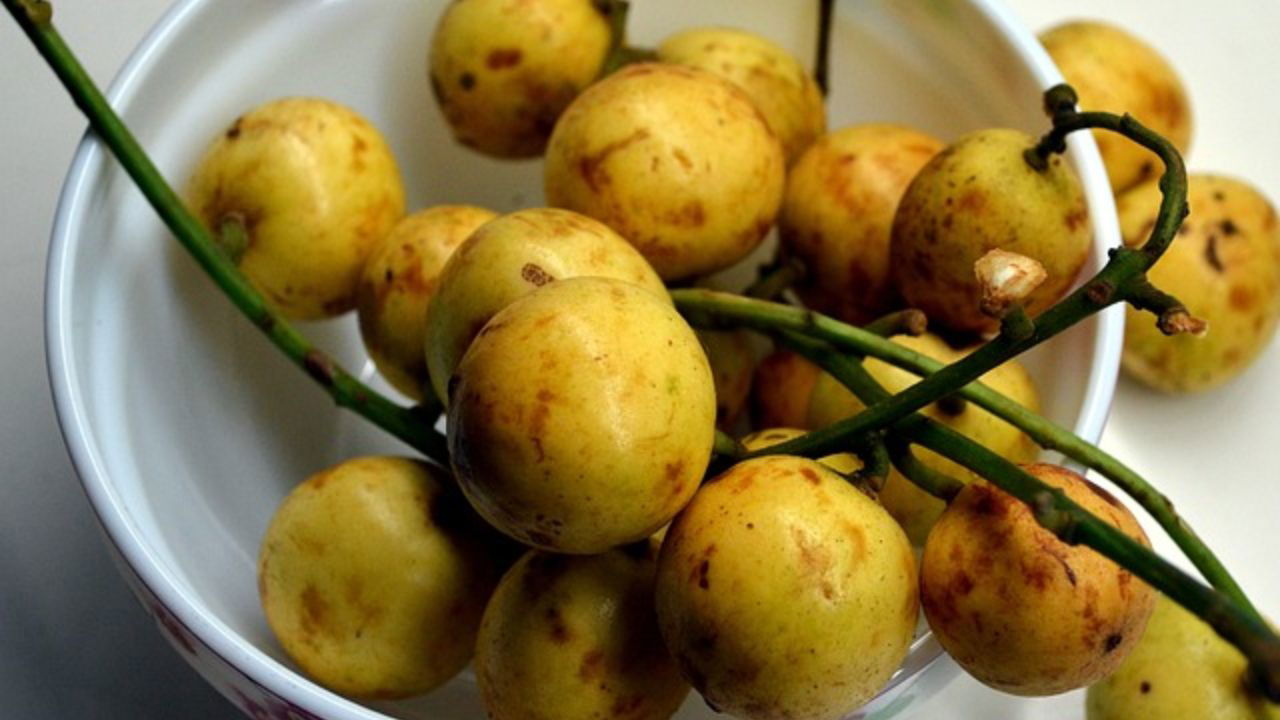
Burmese grape is scientifically known as Baccaurea ramiflora. This fruit belongs to the family Euphorbiaceae. It is primarily found in Southeast Asia and is cultivated in Nepal, Bangladesh, Thailand, Myanmar, Indonesia, and India. In India, it is mainly grown under homestead cultivation in northern West Bengal, specifically in the districts of Cooch Behar, Jalpaiguri, Darjeeling, and Dinajpur. It is a valuable yet underutilized crop, typically intercropped with rambutan, durian, and mango.
Cultivation and Botany
Burmese grape is a slow-growing, evergreen, dioecious plant. It thrives very well in tropical as well as in subtropical climatic conditions. Its growth as in backyard plantation is excellent. It can tolerate shade or partial shade conditions. The adventitious or cauliflorous fruits are oval to round in shape.
The color of the fruit turns yellowish or yellow when mature. The edible fruit part is Aril. The aril is covered with a rind made of leathery fiber. It tends to fruit during the rainy season. The requirement of the inputs is minimal. Hence it is ideal for small-scale farmers.
Nutritional Value
The Burmese grape is full of essential nutrients such as vitamin C, protein, and iron. This underutilised fruit be a great addition to diets. It contains about 273 mg of vitamin C per 100 g of fruit pulp. This vitamin C functions as an antioxidant. The pulp also holds 169 mg of calcium, 137 mg of potassium, 177 mg of phosphorus, and 100 mg of iron in every 100 g pulp.
These are all micronutrients that may help avoid anemia or nutrient deficiency. Its sodium-potassium balance assists in regulating blood pressure and overall heart health. Antioxidant functions enhance general wellness.
Medicinal and industrial uses
Traditionally, the Burmese grape has various medicinal uses. The entire fruit, leaves, roots, and bark have anti-inflammatory properties. It is used to treat pain, abscesses, and anemia. It has a high amount of vitamin C for immunity. The antioxidant characteristics help in removing oxidative stress. The seeds from this plant are collected to prepare oil. The oil is full of omega-9 fatty acid which is suited to all cardiovascular health applications and cosmetic and soap markets. The seeds also yield annatto dye. This dye is used extensively for dyeing various textiles.
Value addition and income generation
Due to its short shelf life, the Burmese grape is suitable for value-added products such as wine, jams, jellies, and chutneys. Some amount of pectin is present in the rind of the fruit. The rind can be used in jelly preparation. The traditional wine prepared from Burmese grapes contains a good amount of natural antioxidants.
Therefore, these value-added opportunities can increase fruit marketability and profit for farmers. In the local markets of West Bengal, the fruit fetches an average price of Rs. 20–30 per kg. This fruit makes it a viable option for income generation
Burmese grapes, an underutilized fruit, offer significant nutritional, medicinal, and economic potential, especially in tropical and subtropical climates. Cultivating them in backyard systems can boost farmers' income while supporting biodiversity. By adopting scientific farming methods and exploring value-added products, rural areas can reduce poverty and promote sustainable development. This fruit also plays a role in enhancing nutrition within communities.
















